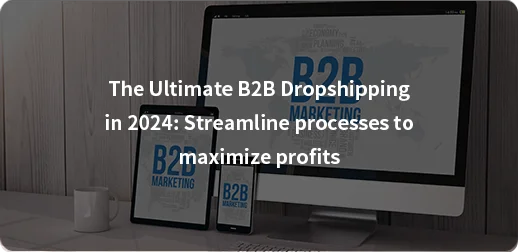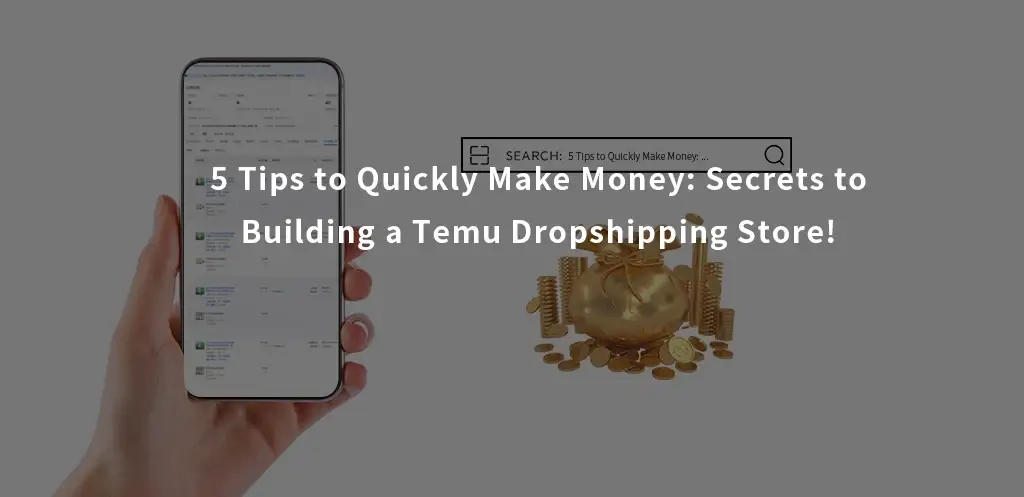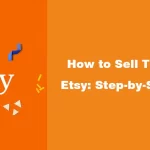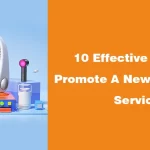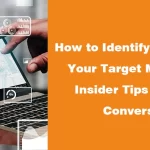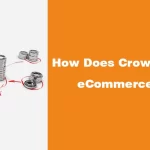Understanding your target market can be daunting, especially when not done right.
You’ve put in countless hours, maybe even years, into building your eCommerce store. You know the pain of seeing your marketing efforts fall flat, and the joy of a campaign that unexpectedly skyrockets sales.
But here’s the thing: most of the time, the difference between those two outcomes boils down to how well you understand your target market.
You’ve probably heard it a million times: “Identify your target market.” But let’s be real, it’s easier said than done. Your target market isn’t “everyone” – and trying to sell to “everyone” only leads to disaster.
You need to pinpoint that sweet spot, the group of people who are just waiting to hear from you because what you offer is exactly what they need.
In this blog I share six insider tips that will help you identify and define your target market while setting you up for conversions that genuinely move the needle.
What Is A Target Market

Let’s break it down simply.
Imagine you’re standing in a huge room filled with all sorts of people – kids, grandparents, teenagers, you name it. But not everyone in that room is going to be interested in what you’re selling. That’s where the idea of a target market comes into play.
A target market is basically that group of people in the room who light up when they see your product. They’re the ones who get it, need it, or just have to have it. These folks share certain traits, like their age, what they enjoy doing, or maybe the kind of jobs they have.
And knowing who they are makes it so much easier to figure out how to talk to them, where to find them, and what makes them tick.
Now, you might be thinking, “But I want everyone to love my products!”
But trying to appeal to everyone is messy and not very effective. Instead, focusing on your target market means you can tailor your message to resonate deeply with the right people.
It’s sort of like knowing exactly what kind of bait to use to catch the fish you want, rather than just casting a wide net and hoping for the best.
How to Conduct Audience Research
Understand your niche
First up, know your niche. What are you selling, and why should anyone care?
Start by looking closely at your products or services. Ask yourself these questions: What need does your product fulfill? How does it make your customer’s life better or easier? These answers tell you more about what you’re selling, but why someone would want to buy it.
For instance, if you sell eco-friendly water bottles, your product satisfies the need to stay hydrated while also addressing the customer’s desire to reduce plastic waste. This is crucial because it highlights the value your product adds to your customer’s life, beyond just the basic function of the product.
Understanding who benefits most from your product is key and this means understanding their lifestyle, values, and challenges.
For example in our eco-friendly water bottles scenarior. Your ideal customer might be someone who’s health-conscious, values sustainability, and frequently participates in outdoor activities. Knowing this helps you tailor your marketing messages and choose the right channels to reach them.
Understanding your niche also means keeping an eye on your competitors. What are they doing well? What gaps are they leaving that you could fill? This doesn’t mean copying what they do, but rather understanding the market dynamics and finding your unique space within it.
If all your competitors focus on the durability of their bottles, but none highlight the aspect of design and fashion, that could be a niche you exploit. Offer bottles that not only last but look good while doing it.

Use your existing customers
When you run an eCommerce store, your existing customers are a wealth of information. They’ve already bought from you, which means they found something in your store that resonated with them.
This is a direct line to understanding who is most likely to make a purchase and what attracts them to your store. But how can you achieve this:
First, take a close look at the people who have already purchased from you. You can gather a lot of information from your sales data. Look for patterns in:
- Age: Knowing the age range of your customers can help tailor your marketing efforts. For example, if most of your customers are in their 30s, the content and products you highlight might differ from those appealing to teenagers.
- Gender: Understanding the gender split of your customer base can guide product development and marketing strategies. Maybe you’ll find out your product appeals more to one gender than you thought, and you can adjust your messaging accordingly.
- Income: Income levels can influence how much people are willing to spend and how often they can afford to make purchases. This might affect your pricing strategy or the types of promotions you run.
- Location: Where your customers are located can inform your shipping policies, targeted ads, and even product offerings. If most of your customers are from a particular region, consider tailoring your inventory to match regional preferences.
- Online Behavior: Look at how customers interact with your online store. Which social media platforms do they come from? What content do they engage with most? This can tell you where to focus your marketing efforts.
- Lifestyle and Values: Try to understand your customers’ lifestyles and values through their purchase patterns and any direct feedback you receive.
Once you have this information, adjust your marketing strategy to better target people like your existing customers.
If you know that your customers are primarily women in their 30s who value sustainability, you might focus your social media efforts on platforms like Instagram with content that highlights the eco-friendly aspects of your products.
You can even create profiles or personas of your typical customers based on this data and let them guide your marketing decisions, from the tone of your emails to the design of your ads.
Look at your analytics
Understanding your analytics is crucial as it shows where your business stands and where it could go.
First off, if you haven’t already, get cozy with tools like Google Analytics. It’s pretty straightforward. Just sign up, and follow the steps to add your website. Once you’re in, you’ll see a dashboard that might seem overwhelming at first, but it’s actually full of gems.
If you’re using social media, each platform has its own insights section, like Facebook Insights or Instagram Analytics. Even TikTok has a very impressive analytics feature.
These tools provide raw data on who visits your site, what they look at, and their actions, like making a purchase or signing up for a newsletter.
Focus on: Who are your visitors? Where do they come from? What pages do they spend time on, and what’s basically the internet version of window shopping but ends up with them leaving your site? This info is gold because it tells you what’s working and what’s as effective.
Next you want to segment them. Your analytics tool will allow you to see your audience in chunks – like age, gender, interests, and location. Why does this matter?
Well, if you know that a big chunk of your visitors are, say, women in their 30s who love gardening, you wouldn’t start marketing chainsaws to them, right? We’re trying to get the right message to the right people.

Understand Your Product Inside Out
Now, let’s turn the spotlight back on you. Understanding your product’s features and benefits is crucial. Why? Because knowing what you sell is one thing, but knowing how it improves your customer’s life is where the magic happens.
Take a product, list down its features, and then translate those into benefits. This isn’t just good for your marketing; it’s great for your product descriptions too.
For instance, if you’re selling eco-friendly food storage bags, the feature might be “made from 100% compostable material.” The benefit?
“Keeps your fruits and veggies fresh, saving you money and reducing food waste.” See what we did there? We’re selling not the storage bags but the picture of a better, more convenient life with the storage bags.
Test
Finally, the fun part: testing your findings. Paid ads are a quick way to see if your audience research holds water. Platforms like Facebook Ads Manager are perfect for this.
Start small, maybe $5 per ad set, and play around with different targeting options based on your research. Keep an eye on which ads perform well and which ones flop.
It’s like a science experiment, but instead of beakers and chemicals, you’re working with content and audiences.
Create different versions of ads for the same product, or try the same ad with different audiences. The goal is to find that sweet spot where your product, your message, and your audience all click. And when they do, it’s not just about making a sale; it’s about creating a connection.
Remember, audience research isn’t a one-and-done deal. It’s an ongoing process. As your business grows, your audience might evolve too.
So, keep digging into those analytics, keep an eye on the competition, and never stop testing. Your future self (and your bank account) will thank you.
Target Market Examples
Nike Target Market
Let’s talk about Nike who mastered the art of pinpointing their target market, a solid example for you as an ecommerce store owner looking to step up your game.
You see, Nike isn’t just selling shoes or sportswear; they’re selling a dream, an aspiration. And they know exactly who’s buying.
So as we all know,Nike sets its sights on athletes and sports enthusiasts. You know, the kind of people who wake up at 5 AM for a run or spend their weekends at a game. Their products are top-notch and designed to last, which means they’re not exactly cheap.
But for their target market—people with a bit of disposable income who see sports not just as a hobby but as a way of life—Nike’s gear is worth every penny.
Notice how their ads are less about the product and more about the story which hits right in the feels, inspiring their audience to “Just Do It.”
Nike’s marketing is a lesson in emotional branding.
Rarely do they ramble on about the features of their products. Instead, they tap into the emotions and aspirations of their audience. Their ads are stories of triumph, hard work, and the journey of overcoming the odds.
Nike tells you that the biggest obstacle isn’t the track ahead, but the voice inside your head saying you can’t. Their message? You can.
For ecommerce store owners like you, Nike’s approach shows that understanding your target market isn’t just about demographics; knowing them well enough to connect on an emotional level.
Netflix Target Audience
Netflix is a prime example of a brand that’s mastered knowing and growing with its target market. Their journey from mail-in DVD rentals to dominating the online streaming space is a masterclass in audience research and adaptation. So, how did they do it?

Netflix doesn’t just guess what people want to watch; they dive deep into data to figure it out.
They look at viewing habits, genre popularity, and even how viewers interact with their content. This way they understand why someone chooses to binge-watch a series or prefers certain documentaries. Netflix uses this insight to curate their offerings while producing content that hits the mark.
Now let’s talk about how understanding their market helped them evolve with the market
Remember when Netflix was known for their DVD rentals?
They could have comfortably stayed in that lane but chose to pivot to streaming, foreseeing the digital shift. This wasn’t a wild guess; it was a calculated move based on observing market trends and listening to their audience’s growing preference for streaming content. Their ability to adapt and evolve without clinging to old models is a big part of their success story.
“Netflix and chill” became more than just a phrase; it became a cultural phenomenon.
Netflix saw this organic buzz and, instead of distancing themselves from it, embraced and fueled the conversation. This wasn’t just smart; it was a stroke of marketing genius. By becoming a part of everyday language, Netflix ensured that it remained top of mind and relevant.
Lego Target Market
Lego, a brand that’s as synonymous with childhood as ice cream trucks and Saturday morning cartoons, has managed to carve out a unique space in the hearts and playrooms of families worldwide. But how did they do it?

At the core of Lego’s strategy is an understanding that while children are the ones playing with the bricks, it’s the parents who are footing the bill. Lego has ingeniously crafted its marketing to appeal to both kids and their guardians.
They’ve positioned their products not just as toys, but as tools for creativity and learning, tapping into parents’ desires to give their children educational yet fun experiences.
Lego’s knack for forming partnerships with beloved franchises like Star Wars, Harry Potter, and Marvel has been nothing short of genius.
By aligning with these titans of entertainment, Lego not only taps into the existing fanbases of these global juggernauts but also ensures its products are at the forefront of both children’s and collectors’ wish lists.
Whether it’s a Millennium Falcon set flying off the shelves at Christmas or a Hogwarts Castle being carefully built and displayed, Lego understands the power of tapping into shared cultural moments.
Lego’s success with products like the Lego Batman series highlights their attentiveness to consumer feedback. By engaging with and listening to their audience, Lego has managed to stay relevant, continuously releasing products that resonate with their fans.
Wrapping Up
Alright, let’s get straight to the point. To boost your eCommerce store’s success, you’ve got to understand who really wants your products.
Ditch the idea of selling to everyone; it’s a waste of effort. Instead, use these six tips: know the specific group you’re selling to, understand your niche inside out, learn from your existing customers, dive into your site’s analytics, clearly present your product’s benefits, and keep tweaking your approach based on real-world feedback.
Look at successful brands like Nike, Netflix, Lego, Vans, and Dior. They don’t just sell products; they connect with their customers’ interests and lifestyles.
Take a leaf from their book.
Focus on people who are most likely to be interested in your offerings, and you’ll see better conversion rates. Keep it straightforward, genuine, and always aligned with your customer’s needs.





